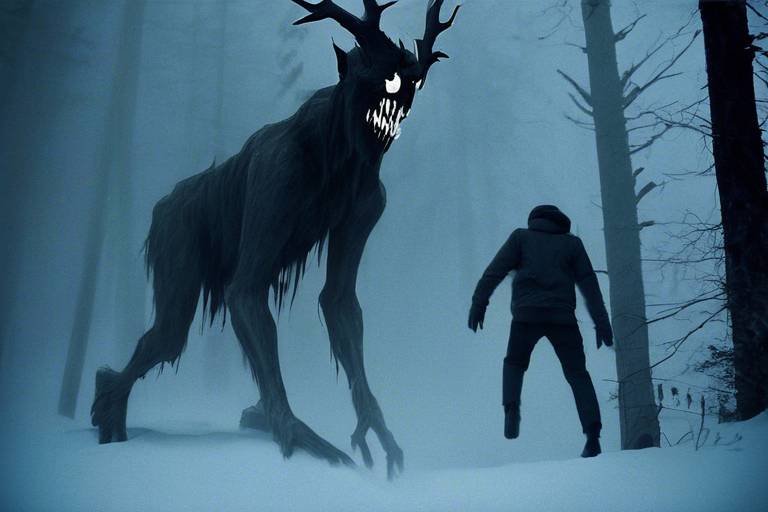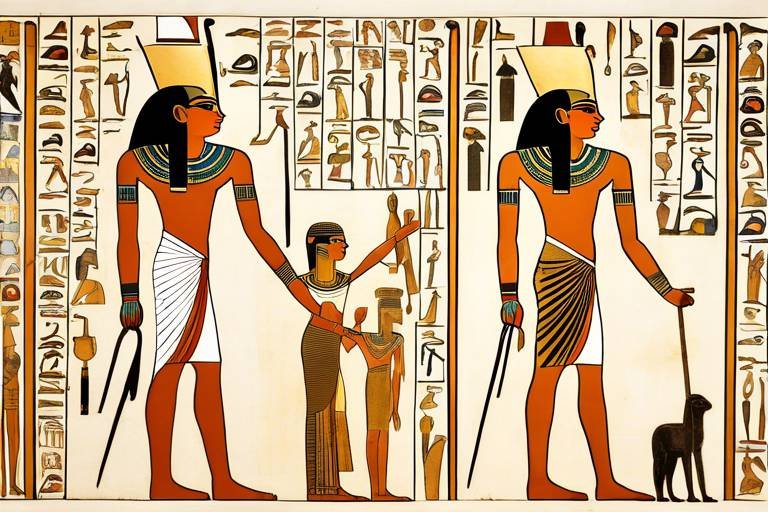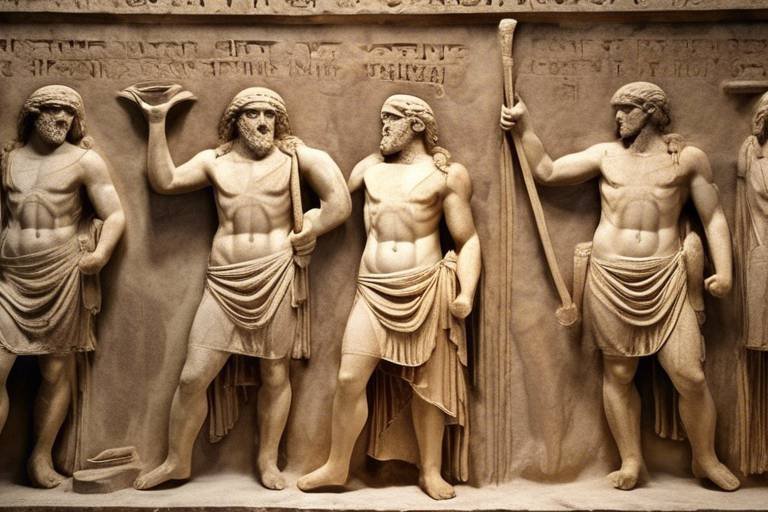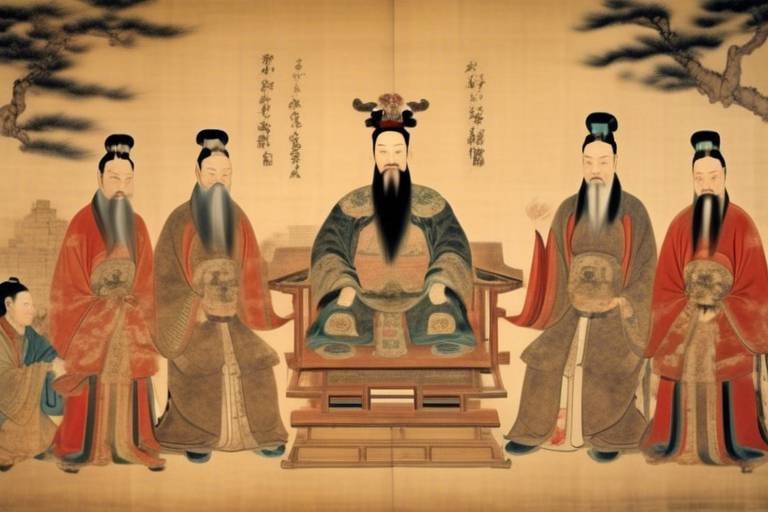The Legend of the Wendigo - A Haunting Tale
Deep in the heart of Algonquian folklore lies a chilling tale that has haunted the minds of many for centuries - the legend of the Wendigo. This malevolent creature, said to embody greed and cannibalism, strikes fear into the hearts of those who dare to delve into its dark origins and terrifying nature.
Originating from Native American myths and oral traditions, the Wendigo's story has evolved over time, weaving its way into the cultural fabric of indigenous beliefs. Its symbolic representation as a harbinger of greed and consumption serves as a cautionary tale against the dangers of unchecked desires.
The Wendigo is characterized by its insatiable hunger for human flesh and its supernatural abilities, making it a formidable and fearsome entity in the realm of folklore. Its presence is said to bring about a sense of dread and foreboding, a reminder of the darker aspects of human nature.
Reports of sightings and encounters with the Wendigo have sent shivers down the spines of those who have crossed paths with this malevolent being. From chilling eyewitness testimonies to eerie tales passed down through generations, the impact of these experiences on individuals and communities is profound and lasting.
Despite its roots in ancient folklore, the Wendigo continues to captivate modern audiences through its portrayal in popular culture. Whether in literature, film, or other media, the creature remains a symbol of primal fear and unchecked greed, resonating with audiences seeking to explore the depths of human darkness.
Psychological interpretations of the Wendigo legend delve into the connections between this myth and human psychology, taboo behaviors, and the shadow aspects of the psyche. The creature's symbolic significance in contemporary society raises questions about our own capacity for greed and the consequences of succumbing to our basest instincts.
Throughout history, various cultures have developed protective measures and rituals to ward off the malevolent influence of the Wendigo. These traditions serve as a reminder of the importance of respecting the balance of nature and the consequences of disrupting the harmony of the natural world.
In today's world, the legend of the Wendigo continues to hold relevance, sparking discussions about greed, consumption, and environmental degradation. Its enduring presence in popular culture serves as a reminder of the timeless themes embedded within the myth and the cautionary lessons it imparts.
As we reflect on the legend of the Wendigo, we are reminded of the moral and ethical lessons it carries. Through warnings about unchecked greed, the consequences of selfishness, and the importance of respecting the natural world, the Wendigo serves as a powerful symbol of the human capacity for both darkness and redemption.

Origins of the Wendigo
The origins of the Wendigo trace back to ancient Native American folklore, specifically among the Algonquian peoples. This malevolent creature is deeply rooted in the oral traditions of indigenous cultures, where it is believed to embody the darkest aspects of human nature. The Wendigo is said to be born out of greed and cannibalism, with its origins shrouded in mystery and fear.
According to legend, the Wendigo is a supernatural being that possesses an insatiable hunger for human flesh. It is often depicted as a towering figure with glowing eyes, emaciated features, and a heart as cold as ice. The creature is said to stalk the forests of North America, preying on unsuspecting victims and driving those who encounter it to madness.
Over time, the myth of the Wendigo has evolved and taken on new meanings in different cultural contexts. While its origins lie in indigenous beliefs, the legend of the Wendigo has transcended traditional folklore to become a symbol of primal fear and the consequences of unchecked greed.

Characteristics of the Wendigo
The Wendigo is a malevolent creature steeped in legend and folklore, known for its chilling characteristics that strike fear into the hearts of those who hear its name. One of the most prominent traits attributed to the Wendigo is its insatiable hunger for human flesh, driving it to commit unspeakable acts of cannibalism. This insidious craving is often portrayed as a manifestation of greed and consumption taken to an extreme, reflecting the darker aspects of human nature.
Aside from its voracious appetite, the Wendigo is also said to possess supernatural abilities that set it apart from mere mortal creatures. Legends speak of its ability to manipulate the environment, lure unsuspecting victims into its grasp, and move swiftly and silently through the wilderness. These supernatural powers add to the aura of fear and mystique surrounding the Wendigo, making it a formidable and terrifying entity.
Furthermore, the Wendigo is often depicted as an emaciated and gaunt figure, its skeletal frame serving as a stark reminder of its ravenous appetite and unquenchable thirst. Its eyes are said to glow with a malevolent light, instilling dread in those who cross its path. This eerie appearance, coupled with its unnatural strength and stealthy nature, makes the Wendigo a truly nightmarish presence in the annals of folklore.

Wendigo Sightings and Encounters
Wendigo Sightings and Encounters have long been a source of chilling tales and spine-tingling accounts across North America. Stories of this malevolent creature lurking in the shadows, its icy breath sending shivers down the spines of those unfortunate enough to encounter it, have been passed down through generations.
One of the most famous Wendigo sightings took place in the depths of the Algonquin wilderness, where a group of hunters stumbled upon a gaunt figure with glowing eyes and elongated limbs. The hunters claimed that the creature emitted an otherworldly howl that froze the very marrow in their bones, leaving them paralyzed with fear.
Reports of Wendigo encounters often describe a feeling of overwhelming dread and a sense of impending doom. Witnesses speak of a primal instinct that warns them of the creature's presence, a deep-seated fear that drives them to flee in terror.
Despite the skepticism of skeptics and the rational explanations offered by scientists, the stories of Wendigo sightings persist. From remote villages to bustling cities, whispers of the creature continue to echo through the collective consciousness, a reminder of the darkness that lurks at the edges of the known world.

Pop Culture Depictions
Pop culture has long been fascinated by the eerie and ominous figure of the Wendigo, incorporating it into various forms of media to evoke feelings of primal fear and unchecked greed. From classic literature to modern films, the Wendigo has left its mark on popular culture as a symbol of insatiable hunger and the consequences of selfish desires.
One notable depiction of the Wendigo can be found in Algernon Blackwood's short story "The Wendigo," where the creature embodies the terrifying unknown lurking in the vast wilderness. Blackwood's tale captures the essence of the Wendigo as a malevolent force that preys on human weakness and drives individuals to commit unspeakable acts.
In more recent times, the Wendigo has made appearances in popular TV shows like "Supernatural," where it is portrayed as a formidable and relentless adversary that tests the limits of human resilience. The creature's presence in these narratives serves as a reminder of the dangers of giving in to greed and the destructive power of unchecked desires.
Furthermore, the Wendigo has been featured in video games such as "Until Dawn," where players must navigate a chilling winter landscape haunted by the creature's presence. This interactive experience immerses players in the heart-pounding terror of encountering the Wendigo, showcasing its enduring appeal as a figure of horror and suspense.
Overall, the pop culture depictions of the Wendigo continue to captivate audiences with their exploration of primal fears and moral dilemmas. Through these portrayals, the legend of the Wendigo lives on as a cautionary tale of the consequences of giving in to greed and the importance of respecting the natural balance of the world.

Psychological Interpretations
Psychological interpretations of the Wendigo legend delve into the depths of human nature, exploring the darker facets of the psyche that the creature embodies. The myth of the Wendigo is often seen as a reflection of primal instincts and taboo behaviors that lurk within us all. Some psychologists view the Wendigo as a metaphor for insatiable desires and unchecked greed, highlighting the consequences of giving in to our most selfish impulses.
Furthermore, the Wendigo legend raises questions about the fragility of human morality and the thin line between civilization and savagery. The creature's insatiable hunger for human flesh symbolizes a deep-seated fear of losing control and succumbing to our most primitive instincts. In a world where materialism and consumption reign supreme, the Wendigo serves as a cautionary tale about the dangers of excess and the destructive power of greed.
Psychological interpretations also explore the concept of cultural taboos and the ways in which societies define and regulate acceptable behavior. The Wendigo myth challenges our notions of morality and ethics, forcing us to confront the darker aspects of human nature that we often prefer to ignore. By examining the psychological underpinnings of the Wendigo legend, we gain insight into our own fears, desires, and vulnerabilities as individuals and as a society.

Protective Measures and Rituals
Throughout history, various cultures have developed protective measures and rituals to safeguard against the malevolent influence of the Wendigo, a creature synonymous with greed and cannibalism in Algonquian folklore. These rituals often involve invoking spiritual forces through ceremonies and practices aimed at warding off the Wendigo's sinister presence. Shamans and spiritual leaders play a crucial role in performing these rituals, drawing on their knowledge of the supernatural to protect their communities.
One common protective measure involves the use of talismans and charms believed to repel the Wendigo's malevolent energy. These objects are often imbued with spiritual power through rituals and blessings, serving as a shield against the creature's influence. Talismans may take various forms, from amulets inscribed with protective symbols to herbs and crystals thought to possess mystical properties.
Rituals to ward off the Wendigo typically involve the recitation of prayers, incantations, and sacred chants designed to invoke benevolent spirits and divine protection. These rituals are performed in sacred spaces such as temples, shrines, or natural settings believed to hold spiritual significance. Participants may engage in purification rites, symbolic gestures, and offerings to appease the spirits and ensure their protection from the Wendigo's wrath.
Some cultures incorporate elaborate ceremonies and communal gatherings as part of their protective rituals against the Wendigo. These events serve not only as a means of spiritual defense but also as a way to strengthen community bonds and reinforce shared beliefs. Through collective participation in these rituals, individuals affirm their commitment to safeguarding their communities from the threat of the Wendigo.
It is important to note that the effectiveness of protective measures and rituals against the Wendigo is often believed to depend on the sincerity and faith of those involved. In many traditions, the power of these rituals lies not only in the actions themselves but also in the intentions and beliefs of the participants. By upholding the sanctity of these practices and maintaining a steadfast resolve, communities seek to fortify themselves against the insidious influence of the Wendigo.

Modern-Day Relevance
Modern-day relevance of the Wendigo legend extends far beyond its origins in Native American folklore, as its themes of greed, consumption, and environmental degradation continue to resonate in contemporary society. The insatiable hunger of the Wendigo serves as a cautionary tale, reflecting the consequences of unchecked greed and the destructive impact of human desires run amok.
The Wendigo's symbolic resonance in discussions of environmental issues highlights the importance of respecting nature and the delicate balance of the natural world. In a time marked by increasing concern over climate change and resource depletion, the legend of the Wendigo serves as a stark reminder of the dangers of exploiting the earth's resources without regard for the long-term consequences.
Furthermore, the enduring presence of the Wendigo in popular culture underscores its lasting impact on modern storytelling. From horror movies to literary works, the figure of the Wendigo continues to captivate audiences with its primal fear and representation of unchecked primal instincts.
As society grapples with questions of ethics, morality, and the consequences of human actions, the legend of the Wendigo offers valuable insights into the darker aspects of the human psyche and the dangers of succumbing to selfish desires at the expense of others and the environment.

Lessons from the Wendigo
As we delve into the chilling folklore of the Wendigo, we uncover not only tales of terror but also valuable lessons embedded in the legend. The Wendigo serves as a cautionary tale, warning against the dangers of unchecked greed and the consequences of selfish actions. Just as the Wendigo's insatiable hunger drives it to commit heinous acts, so too can our unchecked desires lead us down a dark path of destruction.
Through the Wendigo legend, we are reminded of the importance of respecting nature and the delicate balance of the natural world. The Wendigo's embodiment of greed and consumption serves as a stark reminder of the impact of human actions on the environment. By heeding the lessons of the Wendigo, we can strive to live in harmony with nature and avoid the pitfalls of unrestrained exploitation.
Furthermore, the Wendigo myth prompts us to reflect on the darker aspects of human nature and the potential for malevolence that lies within us all. By acknowledging and confronting our own inner demons, we can strive to overcome selfish impulses and cultivate empathy and compassion towards others.
Ultimately, the legend of the Wendigo imparts timeless wisdom that transcends cultural boundaries and resonates with audiences across generations. It challenges us to confront our own inner Wendigos, to resist the temptations of greed and selfishness, and to strive for a more harmonious existence with both the natural world and our fellow human beings.
Frequently Asked Questions
- What is the Wendigo?
The Wendigo is a malevolent creature originating from Algonquian folklore, known for its association with greed and cannibalism. It is believed to embody the dark consequences of unchecked desires and consumption.
- Are Wendigo sightings real?
While Wendigo sightings are primarily rooted in folklore and legend, there have been reported encounters across North America. These accounts often serve as cautionary tales about the dangers of succumbing to greed and selfishness.
- What are the characteristics of the Wendigo?
The Wendigo is described as having an insatiable hunger for human flesh, along with supernatural abilities such as shape-shifting and luring victims into the wilderness. It symbolizes the destructive nature of greed and the consequences of indulging in selfish desires.
- How has the Wendigo influenced popular culture?
The Wendigo has made its mark in literature, film, and other media as a symbol of primal fear and the consequences of greed. Its portrayal often reflects societal anxieties about unchecked consumption and the darker aspects of human nature.
- What lessons can be learned from the legend of the Wendigo?
The legend of the Wendigo serves as a cautionary tale about the dangers of greed, selfishness, and environmental exploitation. It reminds us of the importance of respecting nature, maintaining balance, and being mindful of our desires and actions.



















